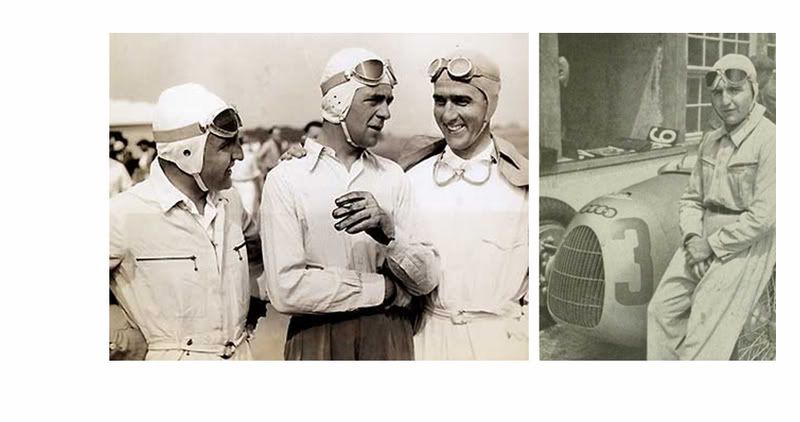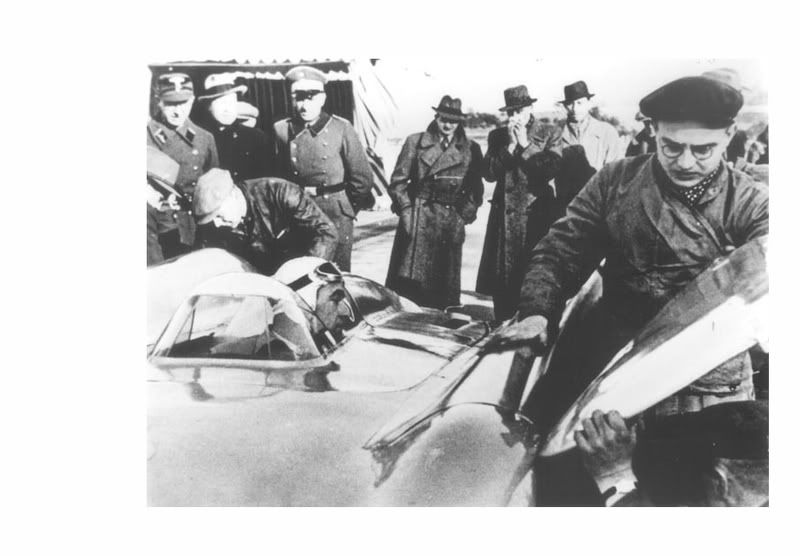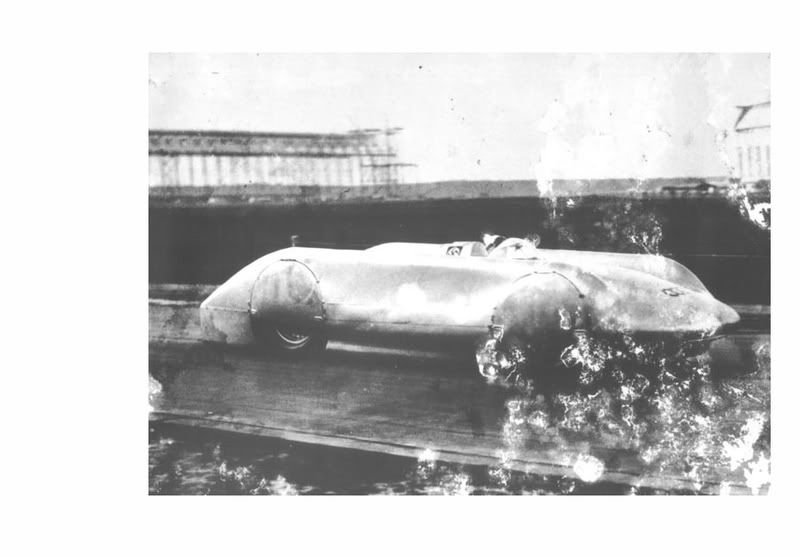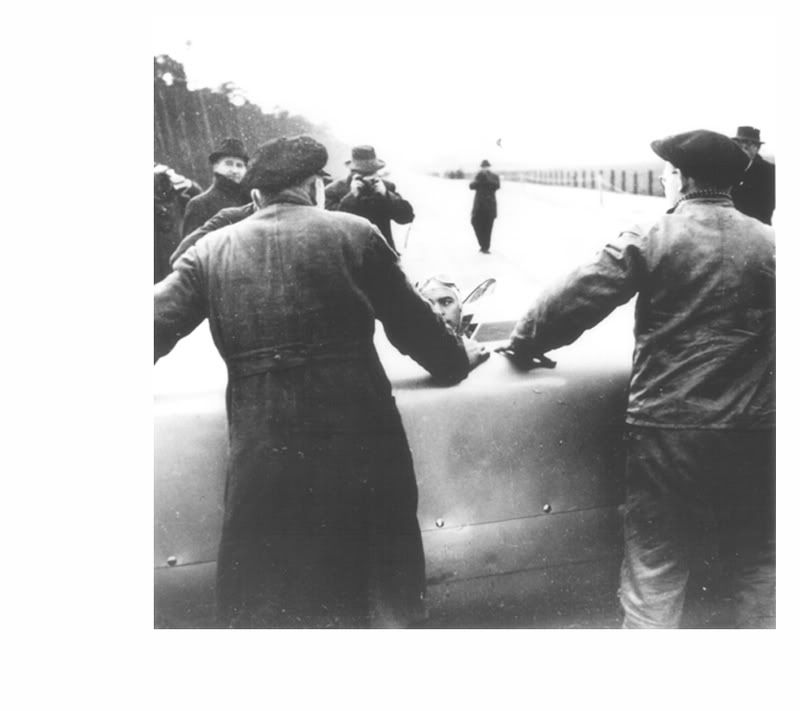Full Canvas
Distinguished Member
- Joined
- Mar 10, 2006
- Messages
- 1,031
- Reaction score
- 3
Some time ago, a few of you requested that I post more images from my collection of historic motor racing photographs. Since the "golden era" of most memories remains the 1960s, I shall start with these flying cars images from the notorious Nürburgring in Germany's Eifel Forest .
Although it is no longer regularly used for any major racing events, the Nürburgring was home to some of motorsports most exciting moments. One particular area of the track, Bruennchen, launched many a car at speed. Below are some flying cars at Bruennchen. When Formula 1 races were still held there, photographers jockeyed for position in the area.
Before Colin Chapman of Lotus made commercial sponsorship dollars the driving force in Formula 1, fields were thin without that sponsor money. More often than not, fields were plumped with Formula 2 cars.
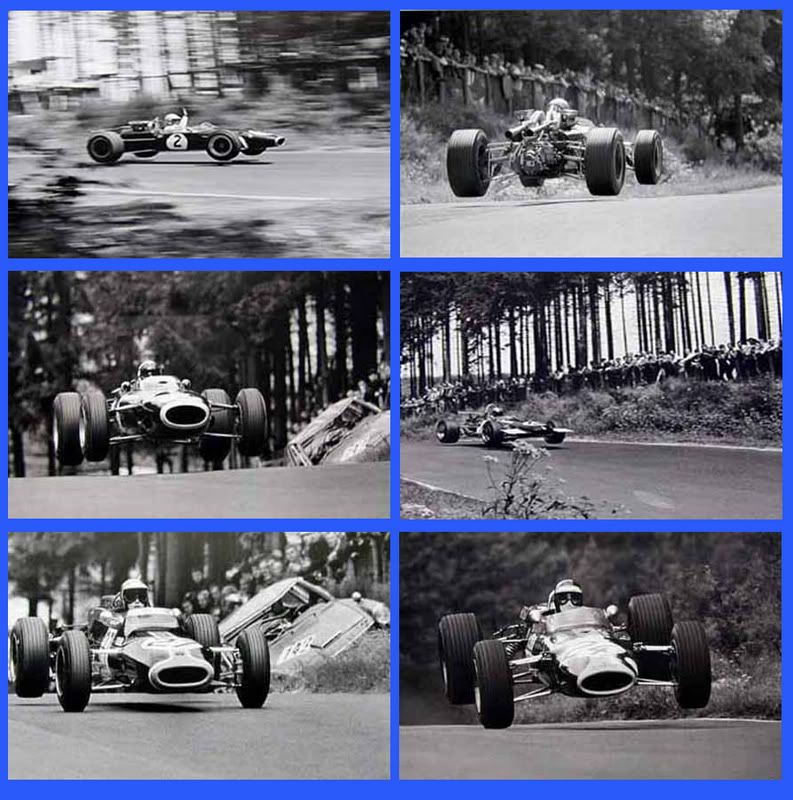
Top Row: left and right – 1967 Coming and Going, Denny Hulme, Brabham Repco BT24
Center Row: left – Jackie Stewart – 1966 BRM P261. Right is Piers Courage in a Formula 2 Brabham BT26.
Bottom Row: left – 1966 Jacky Ickx, Matra MS5 Cosworth Formula 2. right – 1966 Jackie Oliver, Lotus 48 Cosworth Formula 2
Note the ditched MGC-GT in both the Stewart and Ickx photos.
____
It wasn't only formula cars that took to the air at Bruennchen. Witness some of these 1960s sports racing cars in the air!

Top Row: left – Flying Burrito Brother? No, it’s Pedro Rodriguez's Ferrari 312P in 1969. To the right is a 1974 Martini Porsche 935.
Second Row: left – 1968 Porsche 908. Right is the 1969 Porsche 908-02 of Jo Siffert/Redman with Brian Redman pictured.
Third Row: left – 1969 Porsche 908-02 of Rolf Stommelen/Hans Hermann with Hermann at the wheel. Right is a 1970 Porsche 908-02 of Gerard Larousse and Helmut Marko with Marko driving.
Bottom Row: left – 1972 Alfa Romeo T33 of Rolf Stommelen. Right is the T33’s inspiration, a 1967 T2Z of Andrea d’Adamich and Nani Galli.
____________________________
Although it is no longer regularly used for any major racing events, the Nürburgring was home to some of motorsports most exciting moments. One particular area of the track, Bruennchen, launched many a car at speed. Below are some flying cars at Bruennchen. When Formula 1 races were still held there, photographers jockeyed for position in the area.
Before Colin Chapman of Lotus made commercial sponsorship dollars the driving force in Formula 1, fields were thin without that sponsor money. More often than not, fields were plumped with Formula 2 cars.

Top Row: left and right – 1967 Coming and Going, Denny Hulme, Brabham Repco BT24
Center Row: left – Jackie Stewart – 1966 BRM P261. Right is Piers Courage in a Formula 2 Brabham BT26.
Bottom Row: left – 1966 Jacky Ickx, Matra MS5 Cosworth Formula 2. right – 1966 Jackie Oliver, Lotus 48 Cosworth Formula 2
Note the ditched MGC-GT in both the Stewart and Ickx photos.
____
It wasn't only formula cars that took to the air at Bruennchen. Witness some of these 1960s sports racing cars in the air!

Top Row: left – Flying Burrito Brother? No, it’s Pedro Rodriguez's Ferrari 312P in 1969. To the right is a 1974 Martini Porsche 935.
Second Row: left – 1968 Porsche 908. Right is the 1969 Porsche 908-02 of Jo Siffert/Redman with Brian Redman pictured.
Third Row: left – 1969 Porsche 908-02 of Rolf Stommelen/Hans Hermann with Hermann at the wheel. Right is a 1970 Porsche 908-02 of Gerard Larousse and Helmut Marko with Marko driving.
Bottom Row: left – 1972 Alfa Romeo T33 of Rolf Stommelen. Right is the T33’s inspiration, a 1967 T2Z of Andrea d’Adamich and Nani Galli.
____________________________


